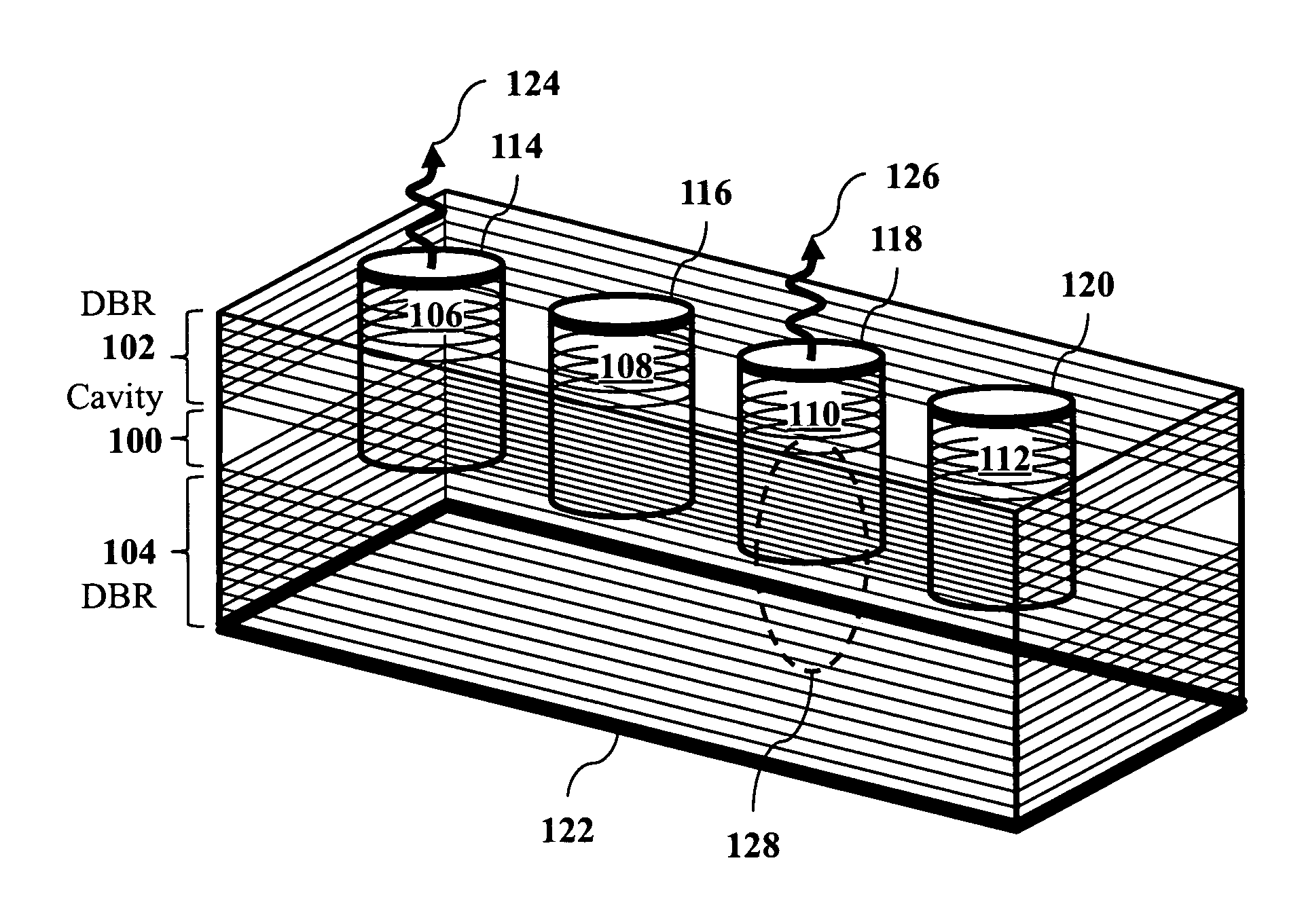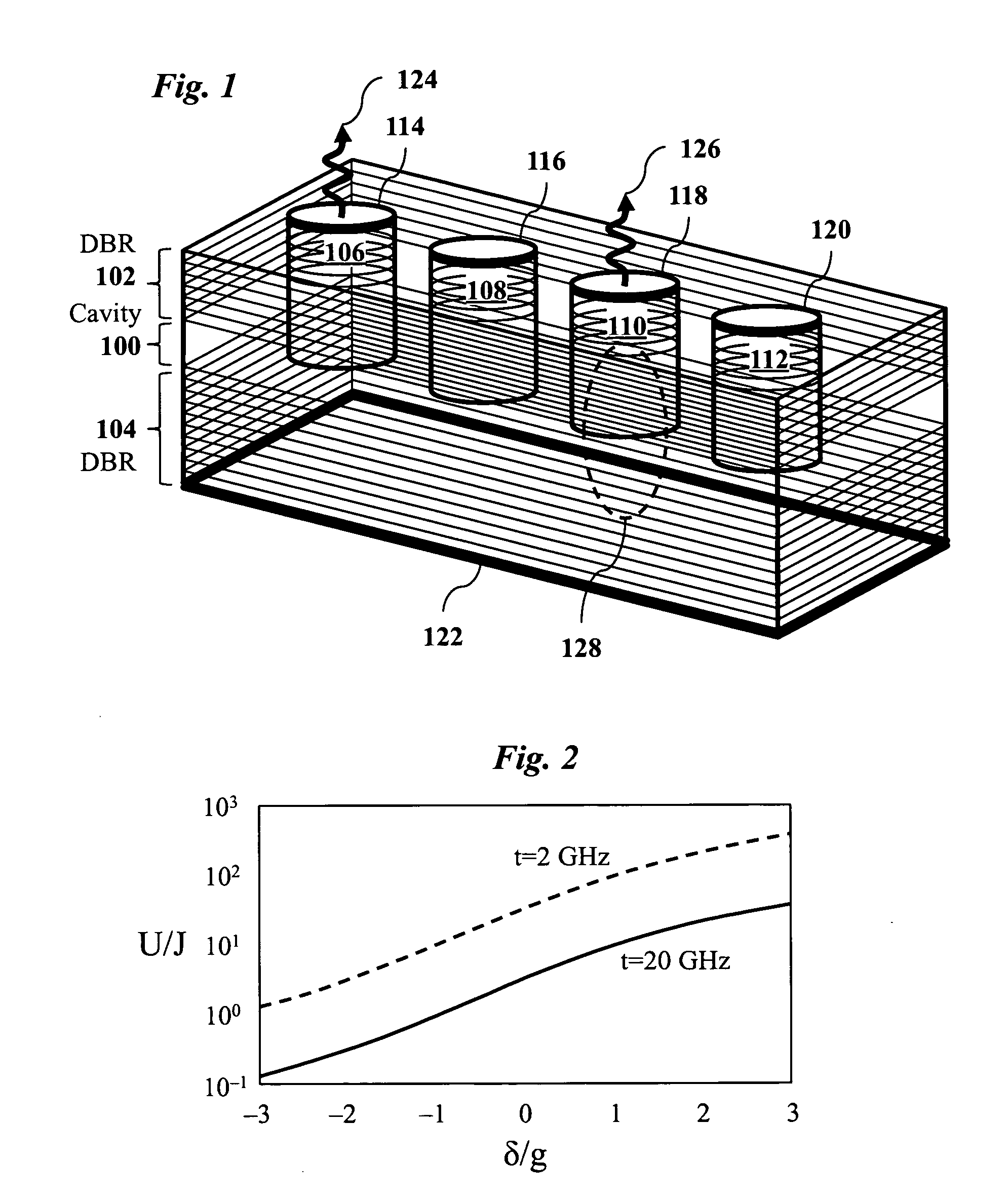Massive parallel generation of nonclassical photons via polaritonic superfluid to mott- insulator quantum phase transition
a quantum phase transition and parallel generation technology, applied in the field of nonclassical photon generation devices and techniques, can solve the problems of inefficiency and high cost of existing techniques for generating single and/or entangled photons, and achieve the effect of boosting the development of quantum information processing
- Summary
- Abstract
- Description
- Claims
- Application Information
AI Technical Summary
Benefits of technology
Problems solved by technology
Method used
Image
Examples
Embodiment Construction
Introduction and Definitions
[0014]The present invention relates to techniques for the generation of nonclassical photons of light. A state of light is defined as nonclassical when it cannot be properly described using classical electromagnetism, i.e., it requires a quantum mechanical description of light, e.g., using quantum optics. Many existing and emerging technologies rely on the unique properties of nonclassical light and require special solid state devices to generate nonclassical photons. Such devices must be designed using a quantum mechanical treatment of materials. One such class of devices are optical microcavities, which are most commonly realized as planar microcavities, but which may also be realized in other forms, such as photonic crystal microcavities. Microcavities have many applications in optoelectronics and have also been used to create single photon emitting devices.
[0015]A planar microcavity is an optical device composed of an optical medium, or cavity layer, ...
PUM
 Login to View More
Login to View More Abstract
Description
Claims
Application Information
 Login to View More
Login to View More - R&D
- Intellectual Property
- Life Sciences
- Materials
- Tech Scout
- Unparalleled Data Quality
- Higher Quality Content
- 60% Fewer Hallucinations
Browse by: Latest US Patents, China's latest patents, Technical Efficacy Thesaurus, Application Domain, Technology Topic, Popular Technical Reports.
© 2025 PatSnap. All rights reserved.Legal|Privacy policy|Modern Slavery Act Transparency Statement|Sitemap|About US| Contact US: help@patsnap.com



